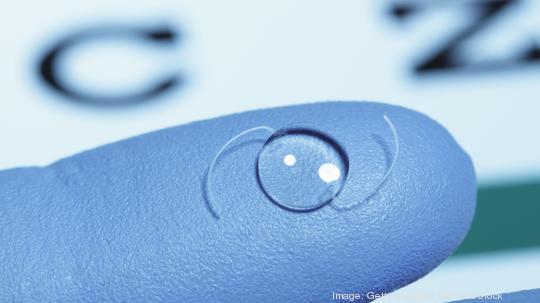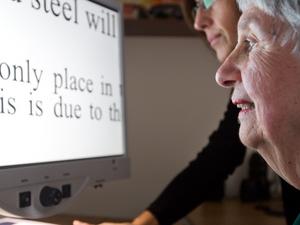
Adaptilens, a Boston-based startup behind an intraocular lens — a lens implanted in the eye to correct vision — has brought in $1.6 million in seed funding.
The round was led by local firm Pillar VC, with additional participation from California firm Accanto Partners. The money will go toward further development of Adaptilens' accommodating intraocular lens, with the eventual goal of overtaking the $139 billion eyewear industry.
Intraocular lenses have been around since the mid-20th century. Accommodating intraocular lenses, like Adaptilens' product, are typically used for patients undergoing cataract surgery. In fact, that will be the first application of Adaptilens' lenses, but the startup ultimately hopes to correct the vision of patients with a variety of refractive errors, including presbyopia, or the loss of near vision caused by decreased elasticity of the eye’s lens. Presbyopia usually occurs around middle age.
“The biggest challenge in solving age-related loss of near vision has been the difficulty of creating a lens that will respond to the eye’s natural signal to focus," Dr. Bonnie Henderson, Adaptilens' co-developer and chair of its scientific advisory board, said in a statement. "We are developing a unique solution to maintain a person’s ability to see clearly and naturally at both distance and near by regaining intrinsic accommodation."
Henderson is a renowned expert in cataract and refractive surgery who now practices at Massachusetts General Hospital. She developed Adaptilens in partnership with Dr. Liane Clamen, the startup's founder and CEO, an ophthalmologist trained at Harvard Medical School. Per the statement, Clamen was inspired to create the Adapitlens after writing a textbook chapter about the history of the intraocular lens; during her research process, she came to the conclusion that no artificial lens truly imitated the natural lens.
The Adaptilens aims to mimic nature, changing shape and allowing patients to see clearly at multiple distances.
"For decades, doctors have been replacing nature’s full, flexible lens with a flat, stiff lens," Clamen said in the statement. "We are determined to provide a better solution by developing a flexible lens that lets the eye’s muscles of accommodation naturally change its shape, and allow people to see clearly at near, intermediate and far distances."





